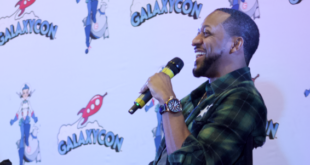Back in October and November 2007, the Russian-French-Italian-German produced four-episode miniseries adaptation of Leo Tolstoy’s War and Peace aired in various European countries. Directed by Robert Dornhelm with the screenplay credited to Lorenzo Favella, Enrico Medioli, and Gavin Scott, the lavish costume drama was produced at an estimated cost of $70,000,000. Seven years later, this incarnation of War and Peace is now available as a two-disc DVD set for U.S. viewers. Simply said, the complex and slow-paced TV War and Peace, based on a novel which ran 1,225 pages in its first edition, is itself daunting and requires disciplined attention.
Speaking strictly of the miniseries adaptation, one issue is just how long it takes to get any plot going at all. Set in Russia during the Napoleonic era, the primary cast play members of five aristocratic families who, in the first episodes, have little to do except spend their time preparing for and suffering boredom at stuffy parties. Among them, the younger generation is full of privileged offspring seeking purpose. The exceptions include Andrei Bolkonsky (Alessio Boni) who wants glory in the army while the idealistic Pierre Bezukhov (Alexander Beyer) considers reforms for his serfs. Everyone else is concerned with who is going to marry whom and when. As a result, the first hour and a half of War and Peace feels like we’re watching a chessboard being set up to get all the characters in place. The problem with watching the early stages of a chess match, however, is that the moves are few and, in this case, there are 21 pieces to get into play.
Ironically, the cast was ballyhooed as drawing from an international well of performers. But, until the midway point, there’s no international flavor to most of the dialogue. For the first two episodes, many of the characters were intentionally passionless, at least on the surface, giving the talking costumes little to work with. Not until Malcolm McDowell appears as Prince Bolkonsky does anyone jump out as a fully-fleshed character with a memorable presence. But if you can make it to the third part, things start to heat up.
In particular, the beautiful Natasha Rostova (Clémence Poésy) becomes embroiled in a poisonous lover’s triangle. Nikolai Rostov (Dmitriy Isaev) takes his family to the brink of ruin to pay off his gambling debts before he becomes drawn into war and matures. The stakes rise when Napoléon (the excellent Scali Delpeyrat) invades Russia and Tsar Alexander (Igor Kostolevsky) calls on his much smaller army to defend the homeland. By the fourth episode, everyone is entwined with the French invasion, the burning of Moscow, and ultimately Napoleon’s retreat and the very, very long denouement after the war is over. The chess pieces finally become involved in interwoven storylines that may pay off for viewers who had the patience to wait for social, cultural, and personal changes reflecting the depth of the source novel.
The portions of the budget invested in the cinematography were well spent, notably the impressively detailed sets an costumes. Much of the series was shot in St. Petersburg at the Bolshoi Drama Theatre, the Neva River, the Prince Vladimir Romanov Palace, the Summer Palace, and the Peter and Paul Fortress. Other scenes were photographed at the Tsarskoye Selo in Leningrad in addition to locations in Lithuania such as the Museum of Ethnography in Vilnius County. As most of the scenes are set on the home front, admittedly the homes of the very well-to-do, there’s minimal time spent on the battlefield. But these moments of war are vivid and credible. In short, War and Peace is a feast for the eyes. An honorable mention should also go to composer Jan A.P. Kaczmarek for theme music that evokes the lush, Rmantic orchestral music of the period.
Being so ornate and scrumptiously shot with so many moving parts, you’d think War and Peace would come with a bounty of special features about the historical contexts, a biography of Tolstoy, and perhaps some making of featurettes. None of the above. There’s merely a little “War and Peace by the Numbers” which is a list of how many items in the film were used. Thanks.
Certainly, there’s an audience for War and Peace. Lovers of the novel should enjoy making their own compare/contrasts between the book and the streamlined adaptation. Some have already noted the casting didn’t always match up with Tolstoy’s original character descriptions. Perhaps some viewers might consider the series a means to experience War and Peace in this medium and bypass all those print pages. After all, there’s none of that philosophical musing Tolstoy included in a book he didn’t really consider a novel in the first place.
But perhaps there’s an audience who can become engrossed with this War and Peace on its own terms expecting to patiently allow a multi-layered story to unfold over six hours and 34 minutes. As so much was invested in it, it seems unfair to dismiss it out of hand. The miniseries will certainly take you to another time and place with wide vistas and minute detail. It’s your call to decide if you even want to start on such a journey.
 Blogcritics The critical lens on today's culture & entertainment
Blogcritics The critical lens on today's culture & entertainment



